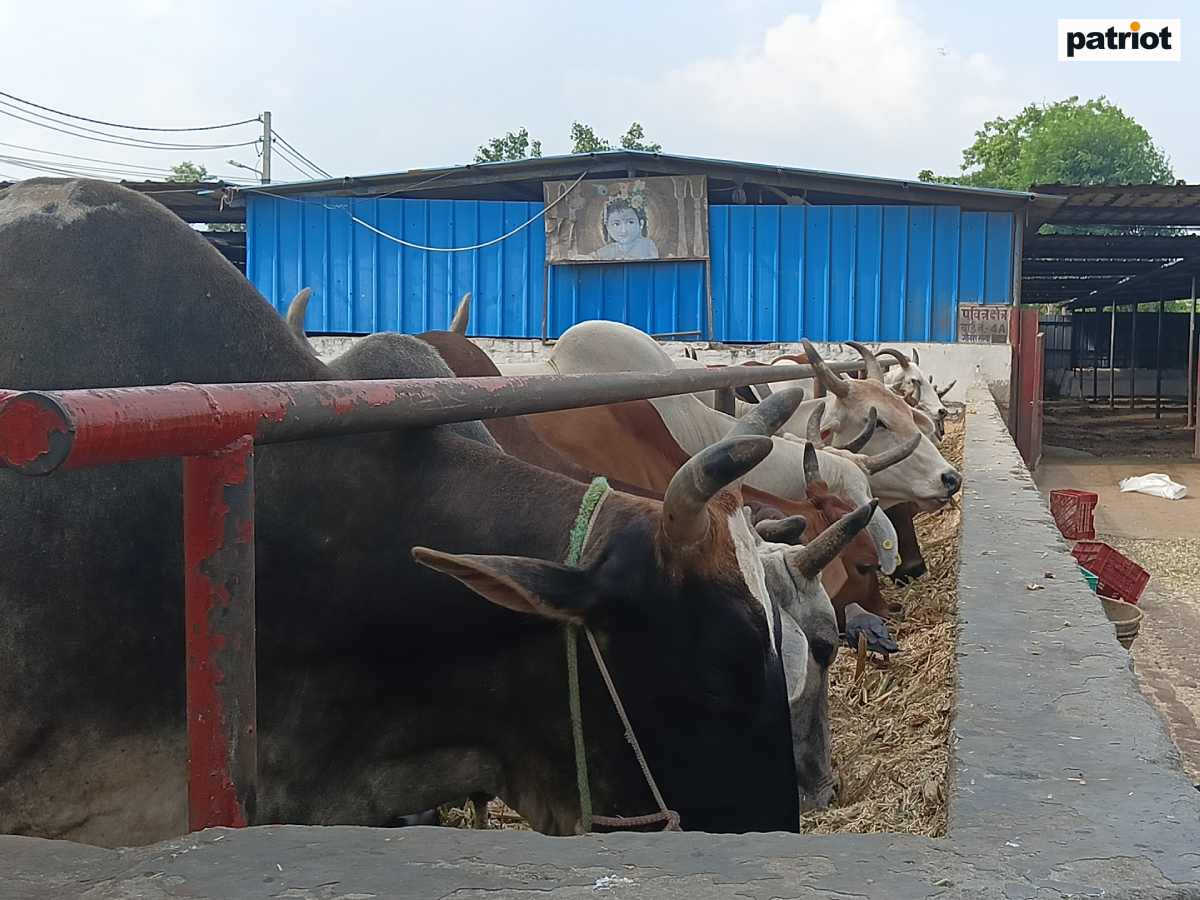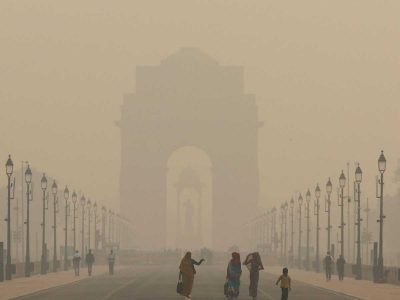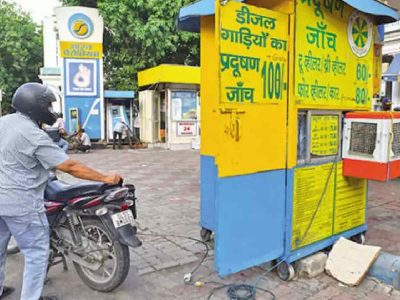Delhi: When 75-year-old Radhe Shyam Batra set out for his regular evening walk on August 10 in Rohini’s Sector 23, he had no idea it would be his last. His stroll was tragically interrupted when a stray cow attacked him from behind, sending him flying and causing him to land headfirst on the ground.
Following the attack at 9:30 p.m., Batra was rushed to the nearby Maharaja Agrasen Hospital. Despite efforts to save him, he succumbed to his injuries three days later, on the morning of August 13.
In a similar incident in February, a man was fatally attacked by a stray bull while returning home with his son from school. The victim, identified as Subhash Jha, was walking through South Delhi’s Khanpur area when a bull suddenly charged at him, delivering multiple blows with its hooves. Despite being rushed to a hospital, Jha was pronounced dead on arrival.
Also read: International Dog Day: Stray dogs surge causes 15% spike in bite cases in Delhi
Stray cattle-related incidents have become a near-regular occurrence in the national capital. In both recent cases, the cattle had been abandoned and left to fend for themselves.
These animals are often abandoned due to illness, inability to provide financial returns to their breeders, or being too wild to domesticate. Many of them end up wandering the streets, causing significant disruptions, such as traffic jams, and, in the worst cases, violent attacks.
Under the Delhi Agricultural Cattle Preservation Act, 1994, the government devised a plan to establish shelters for stray cattle. As part of the Act’s implementation, a scheme called the ‘Setting up of Ten Gau Sadans’ was introduced.
However, according to the Delhi Development Department’s website, only five of the ten proposed cattle shelters exist: Shree Krishna Goshala in Sultanpur Dabas, Gopal Gosadan in Harevali, Manav Gosadan in Rewla Khanpur, Dabar Hare Krishna Gaushala in Surhera village, and Acharya Sushil Gosadan in Gummanhera village.
Of these five, Acharya Sushil Gosadan has become dysfunctional, despite the website listing its maximum capacity as 4,142 cows. An official from the Animal Husbandry department stated that the shelter has been closed since 2019, with the remaining cattle relocated to other facilities.
The four remaining shelters are struggling with severe overpopulation and allegedly a lack of funds from the Delhi government’s grants, hampering their ability to function effectively. The Patriot visited all four operational shelters to assess the situation on the ground.
Shree Krishna Goshala
Brimming with devotees unloading polythene bags filled with offerings ranging from bananas to rotis, the festive energy of Janmashtami permeated the shelter’s 36-acre grounds on August 26.
However, the festive mood quickly faded when one looked at the scores of cows with protruding bones and others with injuries that seemed on the brink of infection. According to workers, most of the cattle arriving at the shelter are old, abandoned, or diseased.
Currently, the shelter is the largest in the national capital, housing approximately 8,500 cattle, despite having a total capacity of 7,848. Operating at about 8.15 per cent above its maximum capacity, managing the shelter has become increasingly difficult over the past three years as funds have dwindled.
“We have not received funds from either the Municipal Corporation of Delhi (MCD) or the Delhi government for some time. The MCD has arrears of ₹36 crore pending for the past six years, while the Delhi government owes ₹6 crore for the past two years,” said Arun Gautam, a member of the goshala’s administration.
He added that the funds they do receive from the government are insufficient to sustain the cattle. “We used to receive ₹20 per cattle per day from both bodies, totalling ₹40 per cow daily. However, each cow needs much more, as even a kilogram of dry fodder costs ₹12. Additionally, we have to pay the staff who live and work here.”
Also read: Civic negligence? Waterlogged pits in Delhi’s Rohini claim lives of three children
Gopal Gosadan
The Gopal Gosadan cow shelter in Harewali faces a similar issue, with overdue payments from the government.
Currently, the shelter, which has a maximum capacity of 3,270 cows, is housing 4,200 cattle, resulting in an official overpopulation of 22.14 per cent.
However, the managing body argues that the actual maximum capacity is much lower, at 2,632 cows, making the current population 37.33 per cent above the permissible limit.
Pramod Sehrawat, the manager of the cattle shelter, said, “We are still awaiting ₹12 crore from the MCD, which has been pending for the past two years, while the state government owes approximately ₹4 crore for the past year.”
He added that it has become impossible to obtain proper fodder for the cows, let alone the medicines needed to treat their ailments.
“We rely on donations from local residents, but even they often prefer giving to private shelters because they believe we receive sufficient funds from the government,” he said.
Manav Gosadan
The cattle shelter in Rewla Khanpur, South West Delhi, is a disaster script in the making, having been in the news on multiple occasions.
In 2005, it was reported that a significant number of cattle had died within a matter of weeks at the facility. Moreover, in 2020, according to the current manager, Dhananjay Singh, the facility was under government scrutiny due to an audit report gone wrong, which revealed that the managing administration at that time was pocketing funds.
Although the management has changed, the situation has not improved. Despite their best efforts, they are struggling to manage the shelter effectively.
Currently, the shelter has 700 cows and an official capacity of 3,488. Singh said they cannot fill the space due to a lack of funds. “We do not have enough funds from the government, and the sheds are also broken, so we cannot accommodate more cows than we have at the moment. The government will need to provide us with more resources if we are to accommodate more cattle. Even the MCD has withheld its funds from us,” he said.
He added that the shelter has been witnessing a mortality rate of around 65 cows per month.
Dabar Hare Krishna Gaushala
Echoing the concerns of other shelters, the management of Dabar Hare Krishna Gaushala in Surhera said they are unable to accommodate more cows due to a lack of government support and insufficient space.
“Nobody wants to visit these shelters anymore. Only government officials make weekly visits to check if everything is functioning as usual, but they provide no monetary support. Stray cattle are increasing in Delhi because we no longer have space to house them,” said Arun Gautam, a staff at the Gaushala.
At present, the Dabar Hare Krishna Gaushala has 5500 cattle inside its premises, with a maximum capacity of 5232.
Krishna Yadav, the manager of the cow shelter, said that the Gaushala remains overpopulated throughout the year. “We have not been able to admit more stray cows because of a space constraint and also due to a lack of funds. We had asked the government to give us more land but they haven’t reverted yet,” he said.
Government’s Response
According to a senior official with the Delhi government, they are working to release funds to help the cow shelters within the next two months. “We expect the funds to be allocated to these shelters in about one and a half months. Currently, the funds are stuck with the Finance Department, which has flagged irregularities, so we are working to expedite the process,” he said.
He added that only Shree Krishna Goshala is currently operating over its capacity and does not have space to accommodate more cows.
However, it stands to reason not to take these statements at face value.





